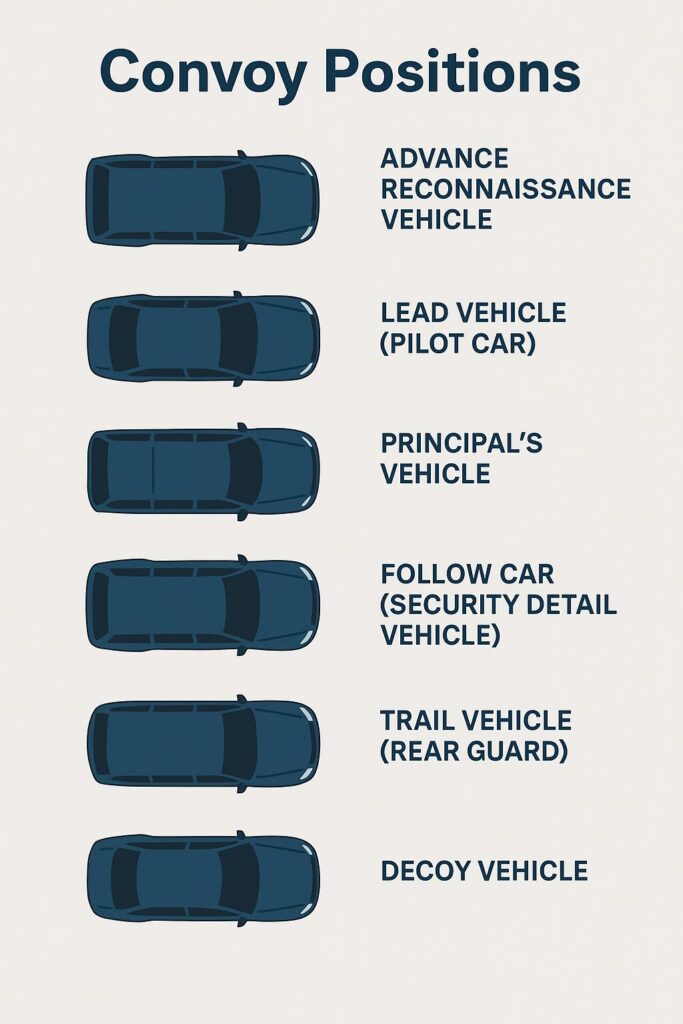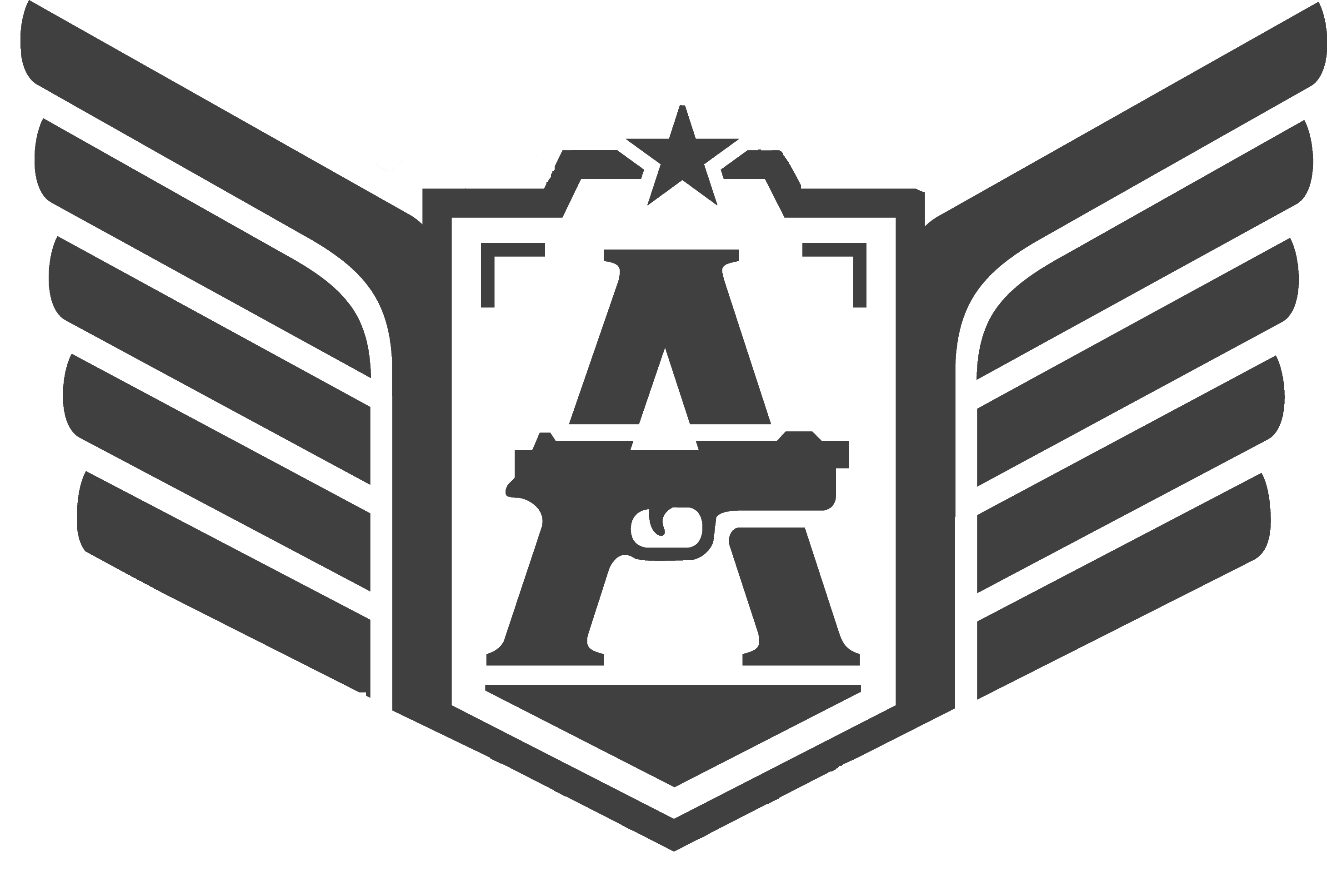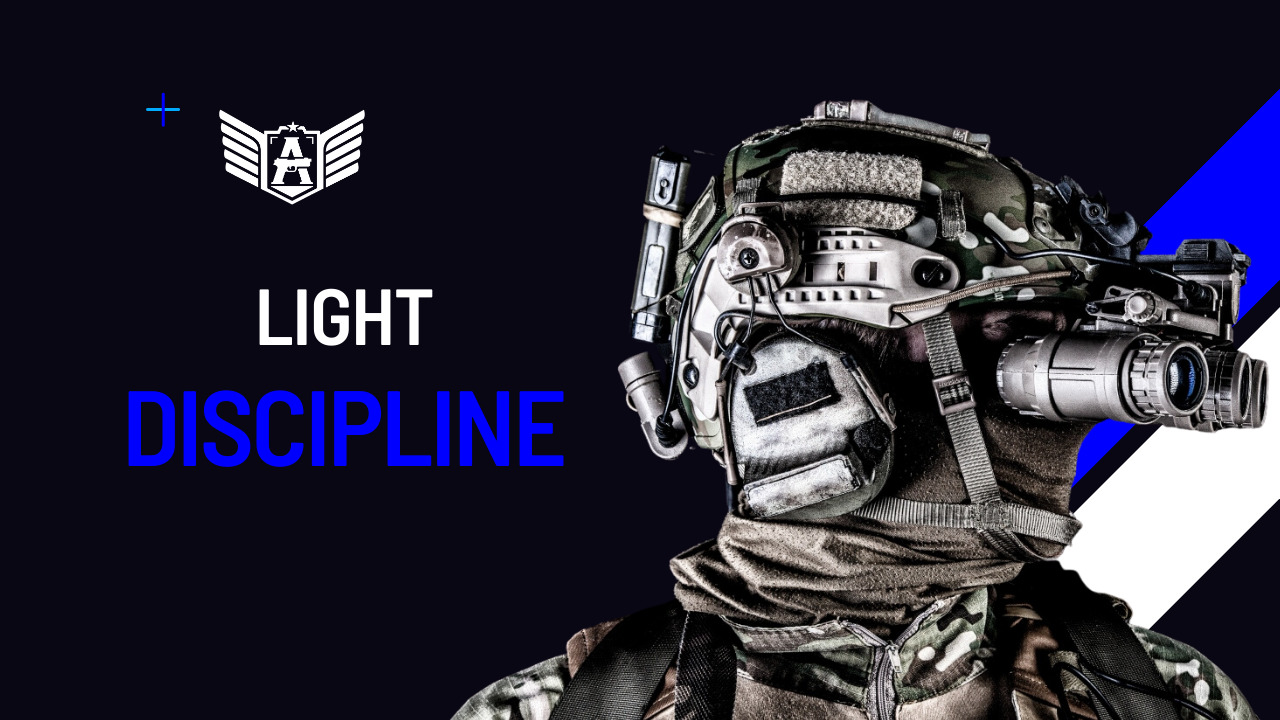Convoy operations are a fundamental tactic for the safe ground movement of dignitaries. A convoy consists of at least two vehicles but can expand to include as many vehicles as necessary, depending on the number of dignitaries being transported and the complexity of the security plan.
Vehicles selected for the convoy should be as similar as possible in terms of external appearance, capacity, power, and maneuverability. This uniformity not only aids in operational effectiveness but also creates confusion for any potential adversaries attempting to identify the principal’s vehicle. Additionally, it is recommended that the vehicles have armor corresponding to the threat level expected in the operational environment.
Drivers must be highly trained in tactical driving, including evasive maneuvers, high-risk obstacle navigation, and aggressive driving techniques when necessary. Ideally, vehicles should possess strong off-road capabilities and higher torque, enabling them to overcome obstacles — an important factor considering the additional weight from armored plating and the need to avoid being trapped in an ambush. SUVs are typically favored for convoy operations due to their durability, higher ground clearance, and power.
At a minimum, a convoy will consist of:
- A Principal’s Vehicle transporting the VIP.
- A Support Vehicle carrying the protective security team.
As the convoy grows, additional specialized vehicles are incorporated:
- Advance Reconnaissance Vehicle: Moves several minutes ahead of the convoy to scout for ambushes, hazards, or suspicious activity.
- Lead Vehicle (Pilot Car): Operates directly ahead of the principal’s car, clearing traffic, identifying immediate threats, and opening the path.
- Follow Car (Security Detail Vehicle): Follows closely behind the principal’s car and houses the tactical security team ready to respond instantly to threats.
- Trail Vehicle (Rear Guard): Secures the convoy’s rear, preventing hostile tailing or surprise attacks from behind.
- Quick Reaction Force (QRF) Vehicle: If available, an additional unit capable of intervening rapidly in emergencies, such as attacks or roadblocks.
- Decoy Vehicles: Identical or similar vehicles within the convoy to obscure the principal’s actual location, complicating targeting by potential attackers.

Key Elements of Successful Convoy Operations
Vehicle Selection: Tactical SUVs are generally preferred, but depending on the mission, armored sedans or trucks may also be utilized. Motorcycles can sometimes be integrated for rapid navigation through heavy traffic or escort functions.
Crew Roles and Responsibilities: Every occupant has a clearly defined role — whether driving, navigating, communicating, or providing tactical support — ensuring seamless operation even under high stress.
Spacing Between Vehicles: Maintaining the right distance between cars is vital: too close risks pile-ups during sudden stops; too far risks losing visual contact and convoy integrity.
Secure Communications: Redundant and encrypted communication systems are crucial, along with clearly established visual signals for covert coordination during contingencies.
Route Planning: Missions must include a primary route, multiple alternate routes, and pre-identified safe zones for emergency responses. Intelligence gathering prior to movement is essential for evaluating risks along all planned paths.
Movement Techniques: Professional convoys balance stealth and speed: moving fast enough to minimize exposure but controlled enough to maintain cohesion and vehicle safety. Overtly aggressive or reckless driving without a valid security reason is strongly discouraged, as it can attract unwanted attention.
Special Tactical Techniques: Deception and Diversion
In larger convoys where vehicles are identical, protective teams often use deception tactics known as the “shell game” to confuse surveillance efforts. By rotating vehicle positions, varying speeds, or even changing the VIP’s car mid-mission, teams significantly reduce the adversary’s chances of locating the principal.
Additional decoy tactics, like temporarily splitting the convoy or using false stops, can further mislead hostile observers or attackers, buying critical seconds or minutes in the event of an assault.
Conclusion
Convoy operations are a sophisticated aspect of executive protection, requiring detailed preparation, highly specialized training, and strategic thinking. Each vehicle and every team member plays a critical role in ensuring the safety and successful movement of the principal. Mastery of convoy composition — including the strategic use of advance teams, decoys, and rapid response elements — combined with tactical driving skills and real-time adaptability, transforms ground transport from a vulnerability into a moving fortress. When properly executed, a convoy becomes not just a method of transport, but an active, dynamic defense system.




